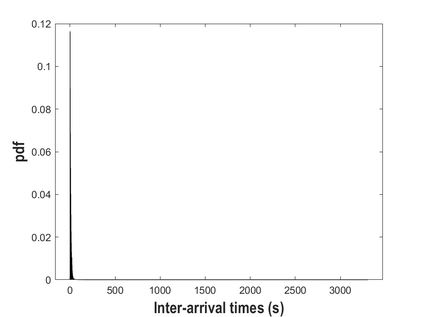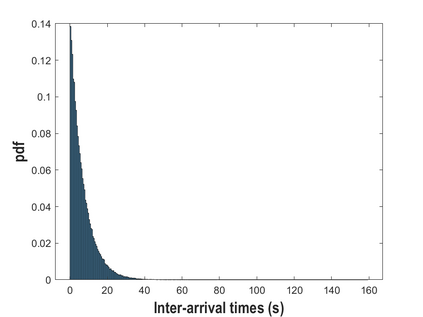Massive Machine-Type Communications (mMTC) are one of the three types of services that should be supported by 5G networks. These are distinguished by the need to serve a large number of devices which are characterized by nonintensive traffic and low energy consumption. While the sporadic nature of the mMTC traffic does not pose an exertion to efficient network operation, multiplexing the traffic from a large number of these devices within the cell certainly does. Therefore, planning carefully the network resources for this traffic is of paramount importance. To do this, the statistics of the traffic pattern that arrives at the base station should be known. To this end, in this paper, we derive the distribution of the inter-arrival times of the traffic at the base station from a general number of mMTC users within the cell, assuming a generic distribution of the traffic pattern by individual users. We validate our results on traces. Results show that adding more mMTC users in the cell increases the variability of the traffic pattern at the base station almost linearly, which is not the case with increasing the traffic generation rates.
翻译:大型机器-机类通信(MMTC)是应当由5G网络支持的三种服务类型之一,其特点是需要为大量以非密集交通和低能消耗为特点的装置提供服务。虽然MMTC交通的零星性质并不对高效率的网络运作造成压力,但从细胞内大量这类装置的交通量乘以倍增,因此,仔细规划这种交通的网络资源至关重要。为此,应当了解基地站交通量的统计。为此,我们从细胞内一般数量的MMTC用户中获取基地站交通量抵达时间的分布情况,假设个别用户对交通量的分布是通用的。我们验证了我们的跟踪结果。结果显示,在细胞中增加更多的MMTC用户会增加基站交通量的波动性,几乎线性地增加基站交通量的波动性,而这种情况与增加交通量的情况不同。






